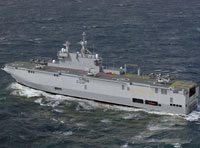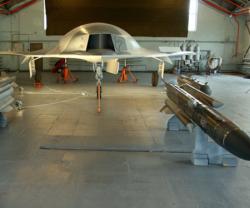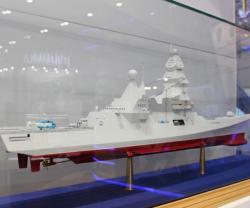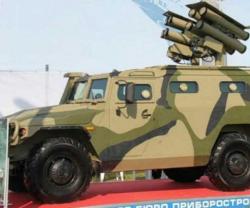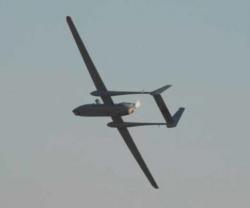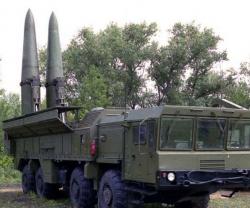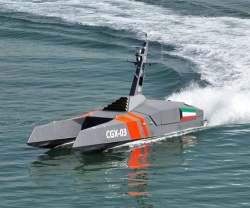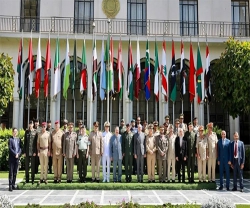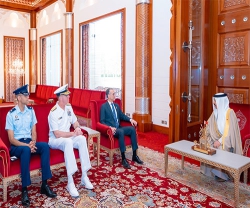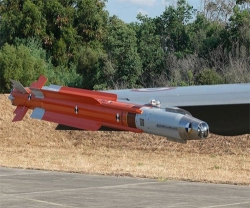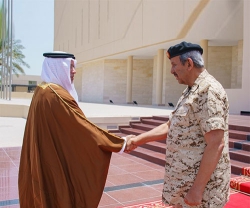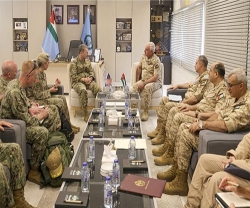DCNS Continues BPC Design Modifications for Russia
19.07.2012 Russia
DCNS is supplying two BPC-type projection and command vessels to Russia under a contract that came into effect at the end of 2011. Three of these vessels are already in service with the French Navy. The design modifications needed to adapt the BPC concept to Russia's specific requirements are progressing as planned.
The design modifications are being conducted in two phases. The first phase ended in April 2012 with the successful completion of the Preliminary Design Review. Detailed design studies were launched immediately afterwards, and this second phase is scheduled for completion in September 2012.
Russia's requirements include modifying the BPC design to accommodate Kamov helicopters and other Russian equipment (excluding weapon systems). The vessels also need to be modified to operate under extreme cold, with higher electrical power availability to de-ice part of the flight deck. All the user interfaces and onboard signage also need to be localised into Russian.
While the design modifications are being finalised, construction of hull blocks for the first of Russia's two BPCs has begun at the STX shipyard in Saint Nazaire. The first 100-tonne hull block will be delivered in September 2012 and laid down in early 2013, marking the beginning of block assembly in the shipbuilding dock.
Russia's OSK shipyards will participate in block construction for the two vessels as a subcontractor to STX, building twelve hull blocks for the aft of the ships.
The first BPC is scheduled for delivery in 2014; three years after the contract came into effect. The second will be delivered in 2015.
The contract calls for the delivery to Russia of two BPC-type vessels along with associated services including initial logistics, training, and technology transfers. DCNS is prime contractor for BPC construction and has responsibility for the integration of the ship’s operations management and communications systems. STX France is building the ships under subcontract to DCNS.
The BPC concept was co-designed by DCNS and STX France to deliver inherently multirole vessels meeting the needs of many navies and ideal for a wide range of civilian and military missions.
With a length of 199 metres, a displacement of 22,000 tonnes and a speed in excess of 18 knots, the BPC offers a global projection capability for troops and materiel, including heavy helicopters and landing craft, as well as ample capacity as a hospital or evacuation vessel for large- scale humanitarian missions. The design also features electric propulsion using azimuth pods and high-level automation compatible with a complement of just 170, while a high-performance communications suite makes the type ideal for the naval force command vessel role.
The first two ships of this type, Mistral and Tonnerre, were built by DCNS and STX France and delivered to the French Navy in 2006 and 2007 respectively. France's third BPC, Dixmude, ordered by the French defence procurement agency in 2009, was delivered by DCNS and STX France on 3 January 2012, three months ahead of the contract schedule.
The design modifications are being conducted in two phases. The first phase ended in April 2012 with the successful completion of the Preliminary Design Review. Detailed design studies were launched immediately afterwards, and this second phase is scheduled for completion in September 2012.
Russia's requirements include modifying the BPC design to accommodate Kamov helicopters and other Russian equipment (excluding weapon systems). The vessels also need to be modified to operate under extreme cold, with higher electrical power availability to de-ice part of the flight deck. All the user interfaces and onboard signage also need to be localised into Russian.
While the design modifications are being finalised, construction of hull blocks for the first of Russia's two BPCs has begun at the STX shipyard in Saint Nazaire. The first 100-tonne hull block will be delivered in September 2012 and laid down in early 2013, marking the beginning of block assembly in the shipbuilding dock.
Russia's OSK shipyards will participate in block construction for the two vessels as a subcontractor to STX, building twelve hull blocks for the aft of the ships.
The first BPC is scheduled for delivery in 2014; three years after the contract came into effect. The second will be delivered in 2015.
The contract calls for the delivery to Russia of two BPC-type vessels along with associated services including initial logistics, training, and technology transfers. DCNS is prime contractor for BPC construction and has responsibility for the integration of the ship’s operations management and communications systems. STX France is building the ships under subcontract to DCNS.
The BPC concept was co-designed by DCNS and STX France to deliver inherently multirole vessels meeting the needs of many navies and ideal for a wide range of civilian and military missions.
With a length of 199 metres, a displacement of 22,000 tonnes and a speed in excess of 18 knots, the BPC offers a global projection capability for troops and materiel, including heavy helicopters and landing craft, as well as ample capacity as a hospital or evacuation vessel for large- scale humanitarian missions. The design also features electric propulsion using azimuth pods and high-level automation compatible with a complement of just 170, while a high-performance communications suite makes the type ideal for the naval force command vessel role.
The first two ships of this type, Mistral and Tonnerre, were built by DCNS and STX France and delivered to the French Navy in 2006 and 2007 respectively. France's third BPC, Dixmude, ordered by the French defence procurement agency in 2009, was delivered by DCNS and STX France on 3 January 2012, three months ahead of the contract schedule.
Previous PostRussia Showcases New Products at Eurosatory 2012
Latest news
Latest events
DefenPol China2025 - 7th Guangzhou International Defense & Police Exhibition & Summit
11 - 12 Jul 2025Nan Fung International Convention & Exhibition Center (NICEC) - ChinaIDEF 2025 Turkey - International Defence Industry Fair
22 - 27 Jul 2025Istanbul Expo Center - TurkeyDSEI 2025
09 - 12 Sep 2025Excel, London - United KingdomIntersec Saudi Arabia
29 Sep - 01 Oct 2025Riyadh International Exhibition & Convention Centre - Saudi Arabia

